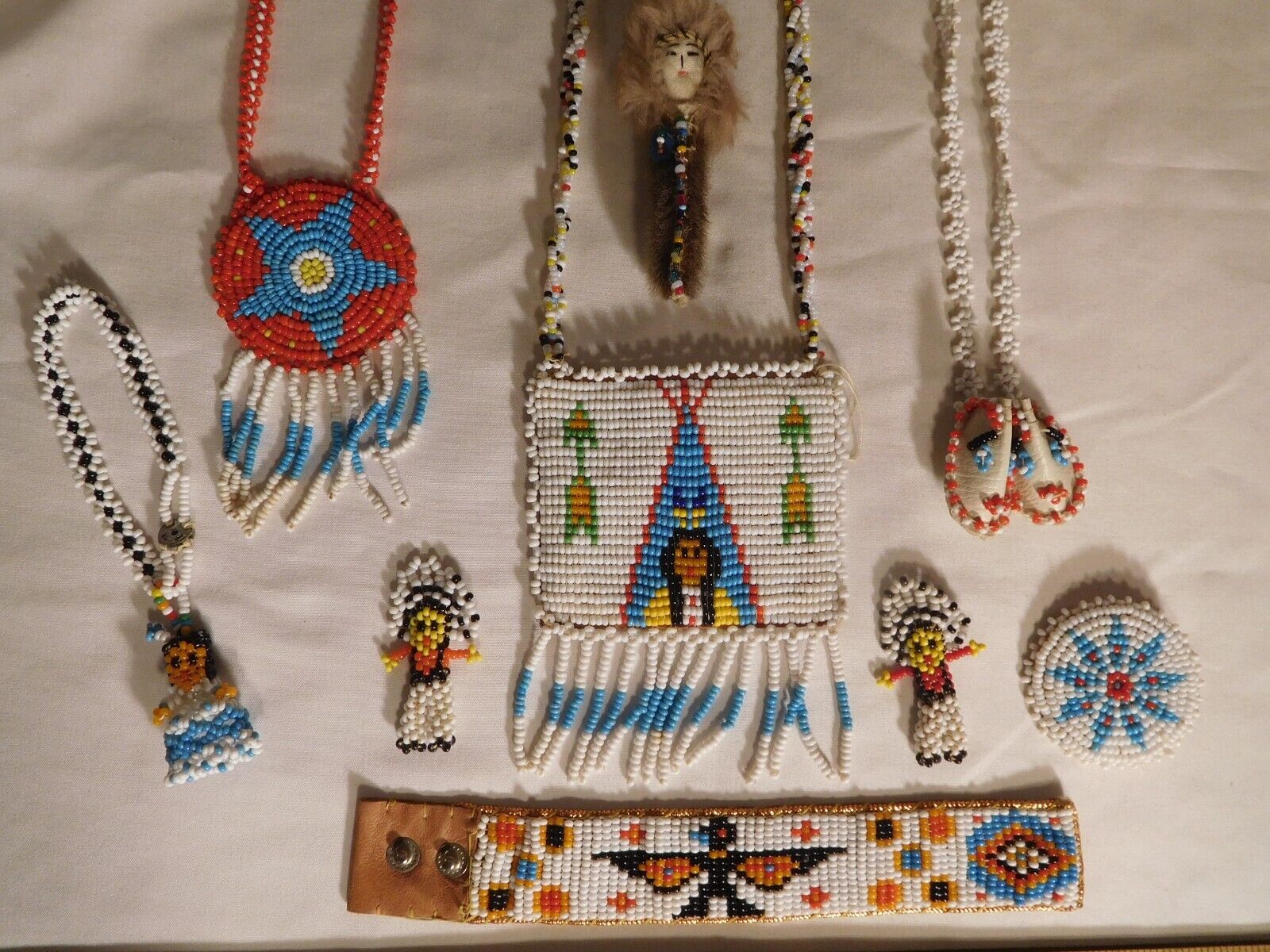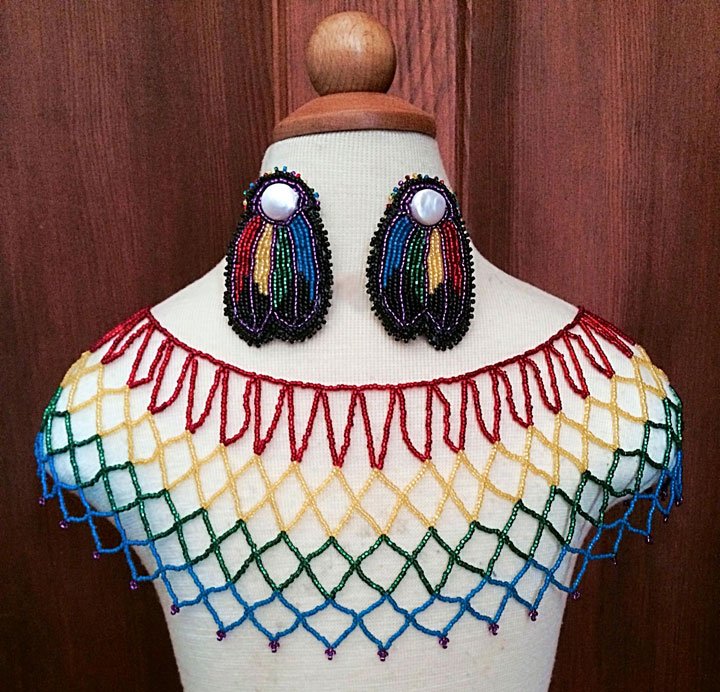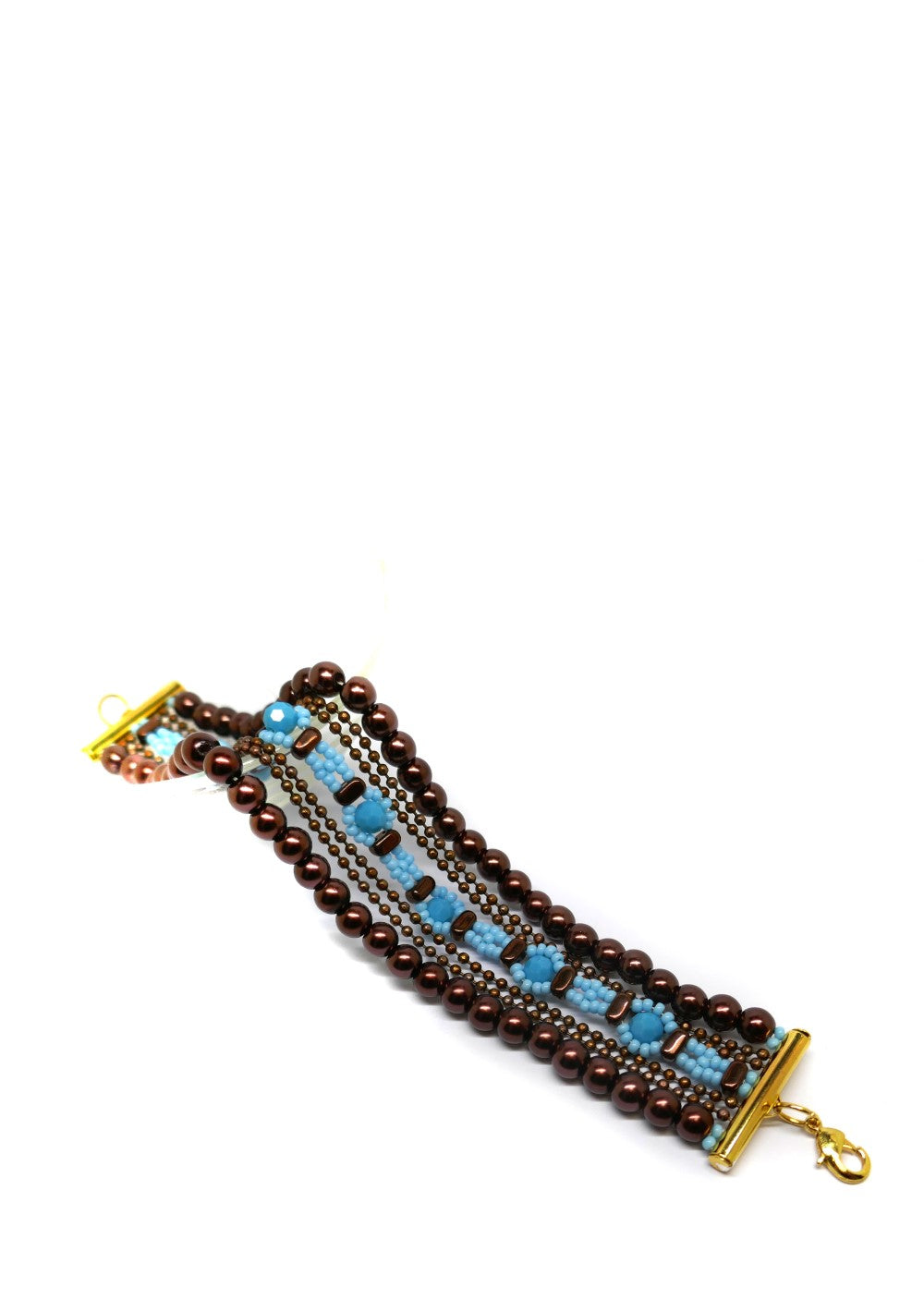Native American beadwork is a rich and intricate art form with a deep cultural significance. This craft has been passed down through generations, symbolizing identity, tradition, and spirituality. Whether you are a novice or a seasoned bead artist, having the right supplies is critical to preserving this beautiful art form. In this comprehensive guide, we will explore the essential tools and materials for Native American beading. Therefore, by understanding these supplies, you can enhance your beading projects and honor the tradition effectively.
The Importance of Authentic Materials
Using authentic materials is crucial in Native American beadwork. These materials ensure the integrity and authenticity of your creations. Therefore, understanding the significance of using genuine supplies is essential for preserving the tradition.

Historical Context
Historically, Native American beadwork used natural materials such as bone, shells, stones, and even porcupine quills. With the arrival of Europeans, glass beads were introduced and quickly integrated into Native beadwork due to their vibrant colors and versatility. Each bead and material holds cultural significance, often representing specific clans, tribes, or spiritual beliefs. Therefore, using authentic materials maintains the historical and cultural essence of Native beadwork.
Ethical Considerations
In addition to historical significance, ethical considerations in sourcing materials are paramount. Purchasing supplies from reputable vendors and Native American artisans supports sustainable practices and helps preserve traditional craftsmanship. Be mindful of the origin of your materials to ensure they respect and honor the culture from which they originate. Therefore, ethical sourcing of materials upholds the integrity of Native American beadwork.
Essential Beading Tools
Having the right beading tools is fundamental for creating intricate and beautiful Native American beadwork. These tools facilitate precision and efficiency, enhancing your crafting experience. Therefore, exploring essential beading tools is crucial.

Beading Needles
Beading needles are indispensable tools in Native American beadwork. They are designed to pass easily through small bead holes and are flexible enough to navigate complex patterns. Traditional beadwork often requires long beading needles, as they allow for embroidery and loom techniques. The size and flexibility of the needle are crucial for maintaining the integrity of the beadwork. Therefore, having a variety of beading needles is essential for versatile projects.
Bead Loom
A bead loom is a specialized tool used in many Native American beading techniques. It allows for the creation of intricate and uniform bead patterns, commonly seen in belts, bracelets, and other decorative items. Traditional bead looms are often made from wood, reflecting the materials available to Native artisans. Modern versions may include adjustable features to accommodate various project sizes. Using a bead loom requires practice, but it enables the creation of symmetrical and intricate patterns. Therefore, a bead loom is a vital tool for traditional beadwork.
High-Quality Beads
The type of beads you use significantly impacts the quality and authenticity of your Native American beadwork. High-quality beads are essential for achieving vibrant and durable designs. Therefore, understanding the different types of beads is important.
Glass Seed Beads
Glass seed beads are among the most commonly used beads in Native American beadwork. These tiny, round beads come in various sizes and colors, offering versatility for intricate patterns. Historically, seed beads were introduced by European traders and quickly became integral to Native beadwork. Their uniform size and vibrant colors make them ideal for creating detailed designs and patterns. When selecting seed beads, opt for high-quality, uniform beads, as they ensure consistency in your work. Therefore, glass seed beads are a staple in Native American beadwork.

Pony Beads
Pony beads are larger than seed beads and are often used in embellishing clothing, accessories, and regalia. These beads come in various colors and finishes, including transparent, opaque, and metallic. Pony beads are easy to handle, making them suitable for beginners and larger projects. Their size allows for quicker beading, which is beneficial when working on extensive designs. When choosing pony beads, ensure they are high-quality and have smooth edges to prevent damage to the thread. Therefore, pony beads are essential for creating bold and striking designs.
Additional Materials for Authentic Beadwork
In addition to beads and tools, various materials enhance the authenticity and durability of Native American beadwork. These materials contribute to the overall aesthetic and functionality of the beadwork. Therefore, exploring additional materials is important for comprehensive projects.
Beading Threads
The choice of beading thread is crucial for the durability and flexibility of your beadwork. Traditional Native American beadwork often used sinew, a natural fiber derived from animal tendons. Modern alternatives include nylon threads, such as Nymo and FireLine, which offer high strength and flexibility. These threads come in various thicknesses and colors to match your beads. Ensure the thread is strong enough to withstand tension and wear without breaking. Therefore, selecting the right beading thread is essential for durable and resilient beadwork.
Tips for Successful Beadwork
Achieving successful and authentic Native American beadwork involves more than just having the right supplies. Understanding best practices and techniques enhances the quality of your work. Therefore, exploring tips for successful beadwork is essential.
Proper Bead Organization
Organizing your beads and materials is crucial for efficient and enjoyable beadwork. Use storage containers with compartments to separate beads by size, color, and type. Label each compartment for easy identification. Keeping your workspace organized reduces frustration and helps maintain focus. Additionally, use beading mats or trays to prevent beads from rolling and getting lost. Proper bead organization streamlines the beading process and ensures a tidy workspace. Therefore, maintaining an organized setup is key to successful beadwork.

Practicing Patience and Precision
Native American beadwork is a meticulous and detailed craft that requires patience and precision. Take your time to ensure each bead is placed correctly and that patterns are consistent. Rushing through the process can lead to inaccuracies and mistakes. Practice makes perfect, so take the time to hone your skills and techniques. Use a magnifying glass if necessary to see small details clearly. By practicing patience and precision, you can achieve high-quality and authentic beadwork. Therefore, emphasizing these qualities is essential for mastering the craft.
Common Mistakes to Avoid
Avoiding common mistakes can help you achieve better results and prevent frustration in your beadwork projects. Understanding these mistakes and how to avoid them enhances your beading experience. Therefore, exploring common mistakes to avoid ensures more effective and enjoyable beadwork.
Overlooking Thread Tension
One common mistake in beadwork is overlooking thread tension. Maintaining consistent tension is crucial for achieving uniform and professional-looking beadwork. Too much tension can cause the thread to break or distort the beads, while too little tension can result in loose and uneven beads. Pay attention to the tension throughout your beading process and adjust as needed. Practice maintaining consistent tension to improve your technique. Therefore, avoiding inconsistent thread tension is crucial for achieving high-quality beadwork.

Ignoring Material Compatibility
Another common mistake is ignoring material compatibility. Different beads and threads may react differently to various conditions, such as humidity or friction. Ensure that your chosen materials are compatible and work well together to prevent issues like breakage or discoloration. Test materials together before starting a large project to avoid complications. By considering material compatibility, you can ensure the longevity and durability of your beadwork. Therefore, addressing this issue is essential for successful and long-lasting projects.
Conclusion: Honoring Tradition with Authentic Beading Supplies
Using authentic Native American beading supplies is essential for creating beautiful and culturally significant beadwork. From high-quality beads like seed beads and pony beads to essential tools such as beading needles and looms, each component plays a crucial role in your projects.
Selecting the right materials, maintaining proper organization, and practicing patience and precision contribute to successful and authentic beadwork. Avoiding common mistakes, such as inconsistent thread tension and ignoring material compatibility, further enhances the quality of your work.
By understanding the significance of using genuine supplies and ethical sourcing, you can honor the tradition of Native American beadwork and create meaningful pieces. Embrace these insights and equip yourself with the right tools and materials to continue this beautiful and intricate art form. Happy beading!
